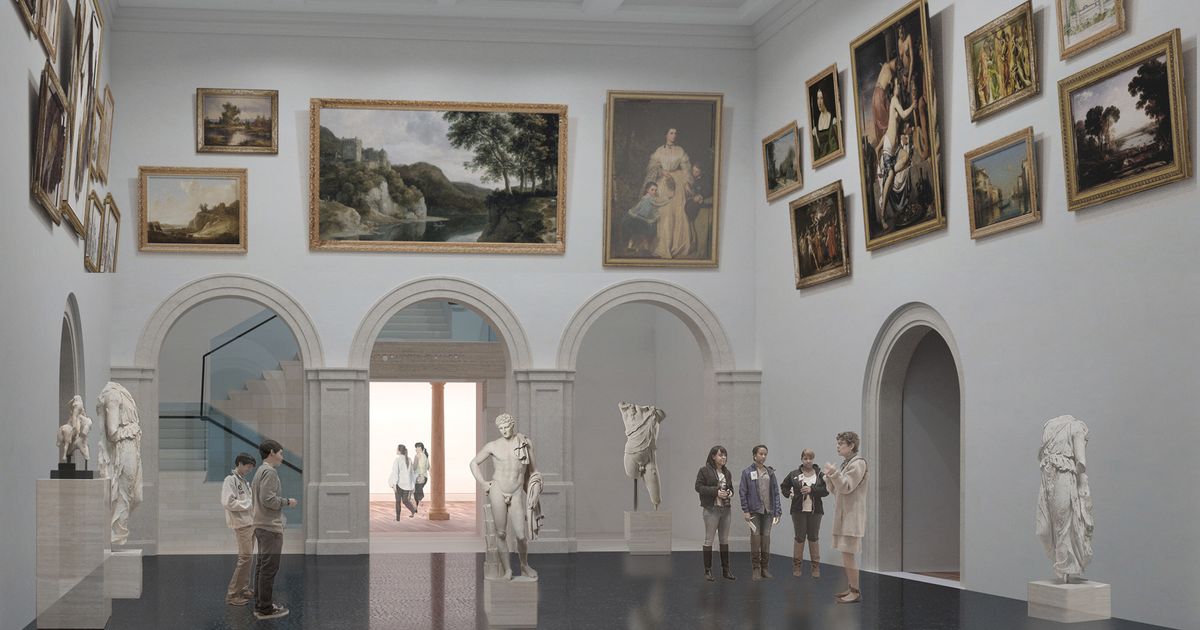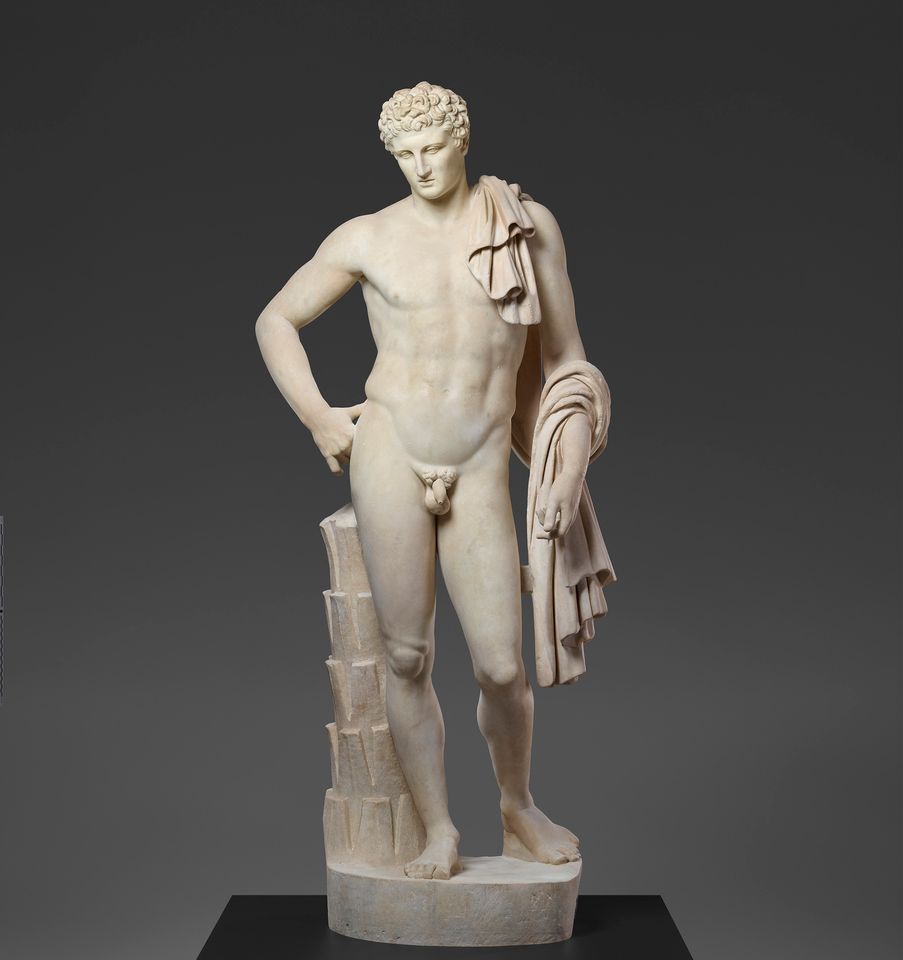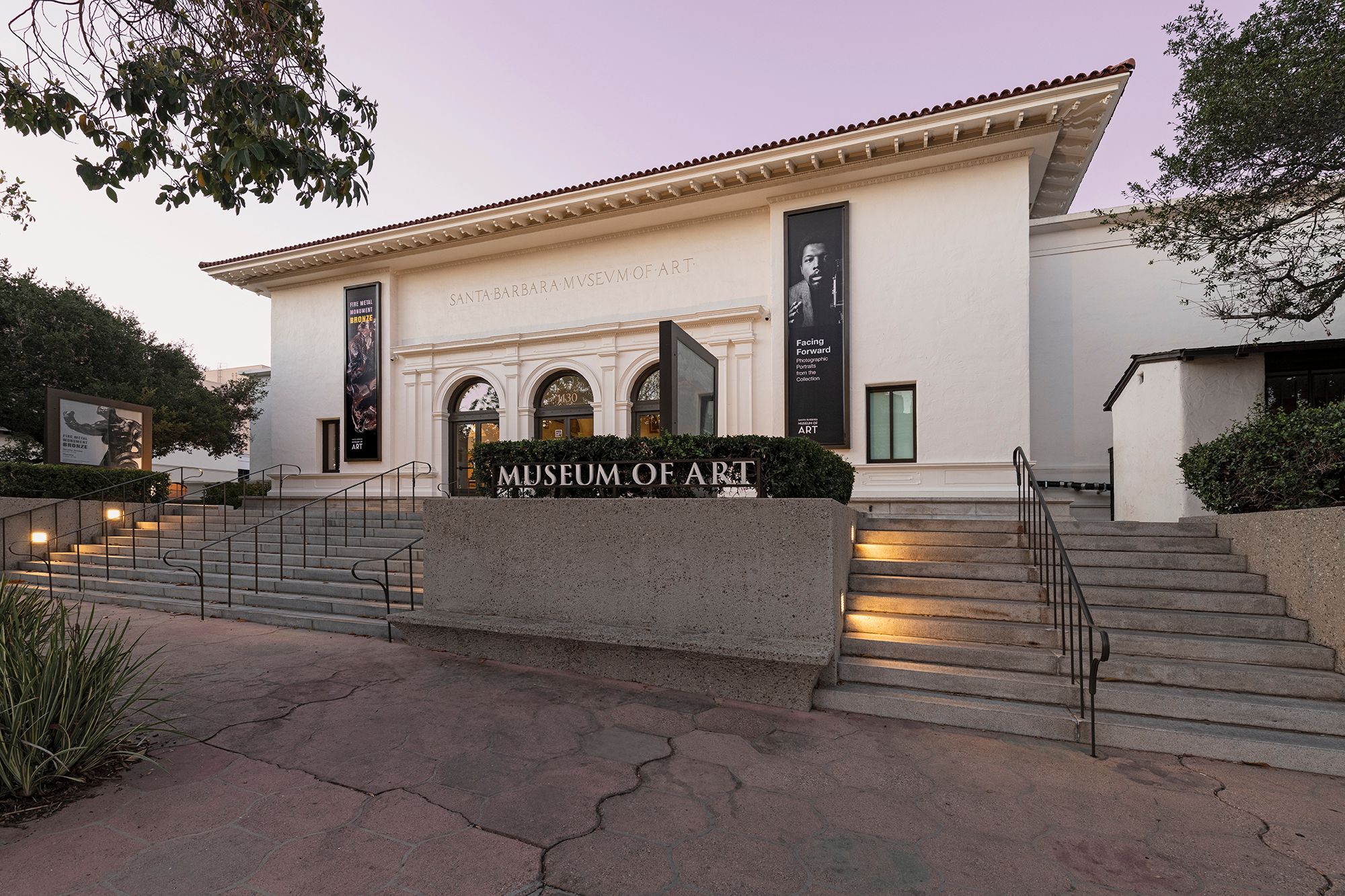
After extended delays related to the Covid-19 pandemic, the Santa Barbara Museum of Art (SBMA) in California will open its newly renovated main lobby and galleries on 15 August, completing the first two stages of a five-part master plan unveiled in 2015.
The total cost of the master plan, which involves extensive improvements for the museum’s 1914 building and the re-installation of its collection, was initially projected at $50m. But the museum’s director and chief executive, Larry J. Feinberg, admits that it has already spent that much on the project, partly because of unforeseen costs such as the difficulty of seismic retrofitting to withstand earthquakes and the need to replace the institution’s main and upper floors.
The museum wanted to take care of “the most critical things first”, Feinberg said during a walkthrough, “which had to do with seismic and structural reinforcement”. Other items on the wish list included a freight elevator and dedicated loading dock, art storage, exhibition space and a new HVAC system. For the most part, the museum had to keep its original footprint but obtained permission from the city to add an elevator tower and loading area outside that footprint.
With a collection of 27,000 works encompassing the arts of the Americas, Asia and Europe, SBMA serves an audience of around 150,000 annually and is a notable West Coast attraction.
The pandemic postponed the unveiling of the renovations from the fall of 2020 and then from last spring. For visitors entering this weekend, the most noticeable changes will be in the entry area and the galleries beyond. The ticketing desk, which used to jut out on the right as one entered, has been moved to its own alcove on the left. Now there is uninterrupted space leading to Ludington Court with its striking arches and an eclectic mix of works, prominent among them the prized Lansdowne Hermes, a second-century Roman sculpture on a new six-foot pedestal.

It is surrounded by a salon-style hanging of American and European paintings by such artists as Hans Memling, George Romney and William Merritt Chase–a nod to the tastes of Wright S. Ludington, one of the museum’s creators and a donor to its founding collection.
Most of the paintings have not been on display in recent years. “It’s a way of really allowing us to show the richness of the collection by making the best, most economical use of the limited wall space that we have,” says Eik Kahng, assistant director and chief curator of the museum.
The large McCormick Gallery has been split into two levels, with a new staircase allowing access to the second floor. Feinberg says the opening exhibitions will largely feature holdings from the permanent collection–Asian art in the first-floor galleries, and photography and contemporary art on the second floor–in commemoration of the museum’s founding 80 years ago.
Feinberg is especially pleased with the new second floor over the McCormick, which adds 1400 sq. ft of exhibition space and will be the first devoted to contemporary art. The centre of that gallery now features a large mirrored orb sculpture by Anish Kapoor surrounded by works by Laddie John Dill, Helen Frankenthaler, Kori Newkirk and others.
A much-anticipated exhibition, Through Vincent’s Eyes: Van Gogh and his Sources, has been put off till 27 February.

Source link : https://www.theartnewspaper.com/news/santa-barbara-museum-of-art-opens-rejuvenated-lobby-and-galleries












